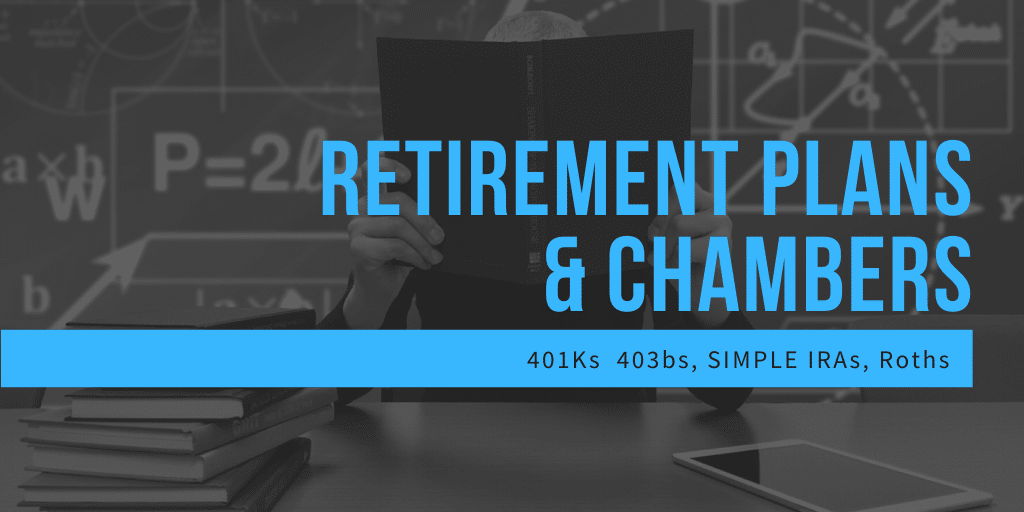“What would she need a retirement plan for? She’s only in her 20s!” Well, here’s why:
| Starting Age: | Monthly Investment: | Total* at age 60 |
| 25 | $100 | $91,917.98 |
| 35 | $150 | $77,961.14 |
| 45 | $300 | $74,968.31 |
Obviously those numbers can greatly vary and the more money you can invest the bigger that end number should be. And I do hope/plan to invest more in the future than I can/do now.
But the sooner you start investing, the sooner you can start earning interest.
And with compound interest, you’ll earn more money on top of the interest you already earned. While that may not be instant gratification, it’s basically free money if you’re patient.
So while I’m a big fan of personal finance, I’m not an expert. You know who is? Brian Williams.
Brian is an Independent Investment Advisor who works with individuals, small businesses and associations. Brian works in a fiduciary capacity 100% of the time, meaning he works in the client’s best interest. His specialty has been helping chambers set up retirement plans for their employees AND member businesses!
So he’s going to better explain how you can plan for & cash in on that ‘easy’ money for retirement:
Types of Retirement Accounts Recommended for Chamber Staff
There are a few different types of workplace retirement accounts. Some key ones you should know about as a chamber/nonprofit employee are:
- 401(k)
- 403(b)
- SIMPLE IRA (Savings Incentive Match PLan for Employees)
You may also have a payroll deduction IRA program or even a state-run IRA program. States such as California, Illinois, and Oregon have started mandatory IRA programs and rolled out state run solutions. Those state-run programs come at no cost to the businesses because the costs are taken on by the employees. Talk to your financial advisor for more information.
While there are similarities, there are some important distinctions. 401(k)s and 403(b)’s have higher contribution limits and the most flexibility of plan design for the employer.
SIMPLE IRA’s are a possibility for smaller organizations, but their use has been less popular recently. With new tax credits, and the increased use of multiple-employer plans, organizations have been less likely to start SIMPLE IRA’s.
Izzy’s note: We have a Simple IRA with a 3% match at my Chamber 😊
You may see the terms Roth or traditional.
A Roth IRA or Roth 401(k) lets you put away money after tax, with the strategy being to take withdrawals tax free in retirement.
Izzy’s note: as a young person, I have an additional Roth IRA I opened on my own without my employer.
The Traditional IRA OR 401(k) allows you get a tax deduction now, but it will be taxable when you take withdrawals in retirement.
How you choose between the two depends on your age, current tax rates, and overall financial position. You may want to consult with an advisor or study up a bit on the options.
Can Our Chamber Offer a “Company” Match?
Yes. As a chamber, there are a few different options.
SIMPLE IRAs have been the go to option in the past. Many chambers now are starting retirement plans not only for their employee, but a plan that their member businesses can adopt into as well. These multiple employer plans are a member benefit that leverages the collective buying power of all the member businesses to get a cost-effective retirement plan.
Izzy’s note: yay, non-dues revenue.
Some employers many even offer a match. There are a few different formulas, but let’s assume a dollar for dollar match for 3%. For easy math, let’s assume you make $100,000 a year and put in 3% of your salary or $3,000. The chamber would also put in $3,000. Making your total contribution for the year $6,000.
If your employer has a match, you always want to take full advantage. Consider it “free money”.
Izzy’s note: when pitching the idea of a company match for chamber employees to your board, keep in mind that the chamber’s contribution is likely less money then they would spend on a raise.
What Do I Do If My Board Says No?
If your board does not agree to start a company retirement plan or won’t offer a match, you can always open an IRA (Individual Retirement Account) on your own.
You can make regular contributions automatically from your bank account or sometimes right from your paycheck.
You can also investment money from side hustles, but that’s another topic…
What Happens to My 401k/IRA When I Leave the Chamber?
When you end your employment with the organization, you have three options.
- Leave the money there. If you have more than a $5,000 balance they cannot force you out. You can no longer contribute, but there may be reasons you’d like to leave it.
- Roll it to your new employer’s plan. You can move the balance from your old employer to your new one. (assuming the new plan accepts rollovers)
- Roll it to an IRA. You may want to do this if you are comfortable managing your own money or have other accounts at a financial institution.
The decision process on what to do involves: the quality of the plan you are leaving, the quality of the plan you are entering and how you feel about managing money on your own. Another newer caveat is data security. The more different accounts you have out there the more likely you are to get hacked or have another security issue.
If your chamber closes or merges, you’ll be okay. Your balance is held at a third-party custodian. The plan would go through a termination process where you’d be rolling your money to a new employer’s plan or to an IRA.
Other Retirement Plan Tips
It’s a retirement plan – not a savings account
The key point to remember is these are designed to be retirement accounts and don’t work great for other purposes.
These are not the place for emergency savings, savings for a house, or a Christmas club account. You may have the ability to take a loan or a financial hardship withdrawal from your retirement plan, but that’s not ideal.
If you are under age 59 and a half there will be a 10% penalty for withdrawals. You may have the ability to take a loan or a financial hardship withdrawal from your retirement plan, but that’s not ideal.
I urge clients to save outside of the 401(k) for other purposes. If you can get to 6 months’ worth of expenses outside of the retirement plan – great.
Contribution Maximums
| 2020 | 2021 | |
| Personal IRA | $6,000 | $6,000 |
| Over age 50 | $7,000 | $7,000 |
| SIMPLE IRA | $13,500 | $13,500 |
| Over age 50 | $16,500 | $16,500 |
| 401(k) | $19,500 | $19,500 |
| Over age 50 | $26,000 | $26,000 |
| Solo 401(k) | $57,000 | $58,000 |
| Over age 50 | $63,500 | $64,500 |
Choosing the Right Plan for You
One thing to consider is the quality of your retirement plan. The investment selection, fees and expenses, type of advice received all very from plan to plan. If you think your plan is expensive or you think the quality of advice you are receiving isn’t good, don’t be afraid to speak up. Often times improvements in benefits programs come from employees.
In my opinion you should make sure you are working with an advisor working in a fiduciary capacity. Believe it or not there are two types of advisors.
- Some are working in your best interest and are legally required to do so.
- Others are more structured to sell you products that only have to be suitable.
There are some proposals at the national and state levels to force advisors to only work in your best interest. There is plenty of reading available out there on the value of working with a fiduciary. We recommend you always ask the question of your advisor.
Some advisors will charge a fee based on a percentage of assets, an hourly rate, a flat fee, or a subscription type program. There is no right or wrong option, just make sure you are paying the appropriate fee for the type of service you are looking for.
Final Thoughts
With all the acronyms and investment talk, the key is to just get going! The earlier the better, but it’s never too late.
If you are comfortable doing most of the work on your own, put together a financial plan that works for you. If you feel more comfortable with an advisor, interview a few. Most advisors do not charge for initial consultations. Now that everyone is familiar with Zoom, there are plenty of options across the country or in your hometown.
Interested in sharing your knowledge? Click here.




